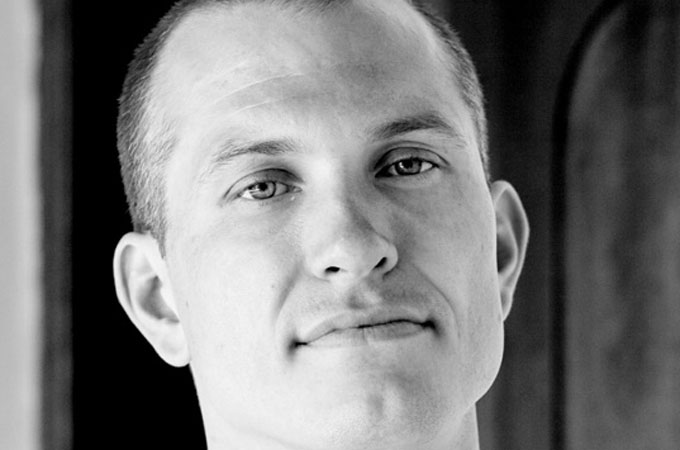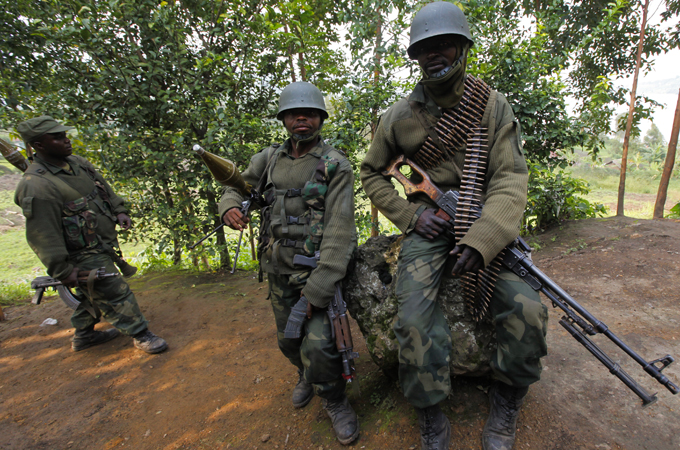Q&A: Behind the M23 mutiny in DR Congo
Former UN expert says solving the crisis in the country’s east requires a compromise neither side is likely to make.

Goma, Democratic Republic of Congo – The M23 rebel group made headlines a week ago when they side-stepped the Congolese army and UN peacekeepers and marched into Goma, the regional capital of North Kivu. The unprecedented move sparked international outrage as the rebels struck at the heart of the eastern Democratic Republic of Congo. The UN says more than 285,000 people have been displaced in the latest onset of fighting in a region that has not seen peace for almost two decades.
A UN report in October alleged that both Rwanda and Uganda were supporting the rebellion, raising fears of a regional war. East African leaders have been unanimous in their demands that the rebels give up Goma, and have until Monday to withdraw. But M23 says it will negotiate with Kinshasa only, and relinquishing Goma appears unlikely at this point.
Amid the rising violence in the eastern DRC, little is still known about the M23 rebels and how they fit into a larger narrative of instability in the country.
Al Jazeera’s Azad Essa speaks to Jason Stearns, director of the Rift Valley Usalama Project based in Nairobi. Stearns – former co-ordinator of the United Nations Group of Experts on the DRC – discusses the M23’s background, its grievances with the Congolese government, and how a myriad of regional interests mean solving this latest crisis will require astute diplomacy.
Al Jazeera: Eastern DRC has a long history of militias and rebel groups fighting to secure regional dominance, over resources and land. Who are the M23 and are they any different?
 |
| Stearns says peace will be difficult to achieve [Al Jazeera] |
Jason Stearns: There are currently several dozen armed groups in the eastern Congo, and each has its own dynamic and history. The M23 is probably the best organized – and certainly best known – of these groups, now numbering several thousand and in control of the eastern Congo’s largest trade hub, Goma.
The M23is different in many ways from other groups. Its officer corps, which stems largely from the ethnic Tutsi community, is well-trained, many of them – including their commander, “General” Sultani Makenga – having first fought to topple Juvenal Habyarimana’s government in Rwanda in 1994, then to do the same with that of Mobutu Sese Seko in the Congo in 1996.
Their sophistication shows in many ways. They have at least two websites, a radio station and political wing. They are also much more affluent – they now control a town of over half a million people that probably has a total cross-border trade of close to $100 million per year.
And, perhaps most importantly, they have very tight links with local elites and those in Kigali. The Rwandan government has provided extensive support to the M23 since its birth, providing direct military support, and help in the form of medical care, recruitment, free passage through its territory and supply of weapons and ammunition.
AJ: How are we meant to understand the M23 and their cause, given that they are made up of former rebels turned Congolese soldiers – who have now rebelled over grievances with the Congolese government – when we know they might be supported by neighbouring and long-time foe Rwanda?
The vast majority of M23 leaders were members of a previous rebellion, the National Congress for the Defense of the People, known as CNDP. The CNDP was also backed by Rwanda. In 2009, the governments of Rwanda and Congo struck a deal to stabilise the eastern Congo, leading to Rwanda’s arrest of the commander of the CNDP, Laurent Nkunda, and the integration of the CNDP into the Congolese army. This was the so-called March 23 Agreement that the current rebellion is named after.
The M23 say that the government did not abide by the terms of this agreement, in particular they didn’t give their officers adequate ranks and salaries, didn’t give their political leaders good positions in national government, and didn’t do enough to bring back some 55,000 Congolese Tutsi refugees from Rwanda, where many had been living for over a decade. This led them to launch a mutiny in April this year, eventually attracting around half of high-ranking former CNDP officers.
Some of this is true, but some is also misleading. Contrary to this bleak picture, the CNDP were given many very lucrative and influential positions after their integration.
 |
| Government soldiers in the town of Minova, near Goma [EPA] |
Like many other Congolese officers, these former rebels used their positions to accumulate wealth, through illegal taxation, cross-border smuggling and protection rackets. Crucially, the ex-CNDP were allowed to stay in the East, where they maintained parallel chains of command within the army.
The real reason the M23 officers launched the mutiny was less due to their professed grievances, but because the Congolese government wanted to bring an end to their privileges. They threatened to dismantle their networks by redeploying some of their top officers elsewhere in the country. It was this that triggered the rebellion. This mutiny initially failed, but Rwanda stepped in to prop it up.
But it would be short-sighted to stop in 2009, as this account leaves many deeper questions unanswered. Why does the Tutsi community have so little trust in Kinshasa? Why does the Rwandan government, which stands to lose a lot in terms of reputation and donor aid, back the rebels? The Congolese Tutsi community has a long, checkered relationship with state power. As many of them are descendants of immigrants – some came during the colonial periods, others following after pogroms in Rwanda in 1959-1962 – their citizenship has often been called into question, and there have been several attempts to collectively strip them of their rights. Vicious anti-Tutsi sentiment is a sad reality of life in parts of the region.
Rwanda is a more difficult nut to crack. There is no doubt about its support, but its motives are more difficult to parse. The government in Kigali has held sway over this part of the Congo for most of the past sixteen years, and it has developed economic interests there. But there are also security imperatives – the FDLR, or Democratic Forces for the Liberation of Rwanda, their arch-enemies whose leaders include some of the people involved in the 1994 genocide, are still based in the eastern Congo, albeit much weakened in recent years. And the simmering chaos there makes it a fertile staging ground for any other forces that might seek to destabilise Rwanda.
AJ: Is M23 a manifestation of larger discontent in eastern Congo, in other words, is there a tangible crisis of governance here and are we moving towards discussion of a possible secession?
JS:There is no doubt that the government in Kinshasa lacks legitimacy, vision and leadership. [Joseph] Kabila was re-elected last year through a rigged election, and his government has done little to tackle the deep-rooted rot of corruption and patronage politics that afflicts the country. The army’s recent lacklustre performance is just another sign of state weakness. Whether a military rebellion could solve any of these issues, however, is another question. It has been tried several times in the past, with little success and much bloodshed.
 |
There is also no doubt that the people of the eastern Congo – indeed, across the country – have little faith that Kinshasa will ever do anything for them. And yet, few back secession. Why? Many see secession, at least led by the M23, as a euphemism for domination by another power.
AJ: So much has been said about the UN’s stabilisation mission in the DRC, especially the cost and size of their operations. Considering the DRC is so unique, is it not time to rethink and re-tailor the UN’s mandate so that it may become more relevant in times like these, or would that set a problematic precedent?
JS: The UN peacekeepers have been most successful politically, and least so militarily. This is how an ideal UN peacekeeping mission should work. A political process is started, with buy-in from most conflict actors, and the UN is given an official role in shepherding through this process. All of its military deployments are then made with this larger political goal in mind. This was the case between 2002-2006, when the UN was the main broker and guarantor of the 2002 Sun City peace deal, which reunited the country and created a transitional government.
The problem is that since 2006, there is no political process regarding the conflict in the East. After the 2006 elections, the Congolese government led by President Kabila claimed that the war was over. The fact that violence was escalating in the East was seen as a matter of national sovereignty – the UN could help the Congolese army defeat the CNDP rebellion, but could not approach them politically. When a political deal was struck with Rwanda in 2009, it was done in secret, and the follow-up committee staffed by international diplomats was given short shrift by Kinshasa.
Thus, the UN was left with a purely military function, doing what it had never done very well: protecting civilians in imminent danger.
But the key point here is that the UN needs to get back to doing what it does best: brokering and implementing peace, not fighting wars. And this requires a political process, and a strong buy-in from the Congolese government, all of which has been sorely lacking in recent years.
AJ: M23 took Goma, the regional capital, with ease, much to the surprise of many. Marching on to Kinshasa is surely a totally different affair. How might this situation be best defused without it descending into a full out war?
JS: We are in a difficult place at the moment. I doubt fighting will bring a solution. As we have seen, the Congolese army is disorganised, while the rebels are unpopular and rely heavily on outside support. But negotiation will also be difficult, as I don’t see what the possible compromise could be. Kinshasa does not want to re-integrate the M23, while the M23 and Rwanda deeply mistrust Kabila.
The M23 need to be re-integrated into the national army, but their parallel chains of command in the Congolese army needs to be dismantled and their worst offenders (as those in the Congolese army) arrested. The Congolese government needs, at the same time, to tackle entrenched problems of local governance, security sector reform, and communal reconciliation.
This kind of deal constitutes a compromise neither side is willing to swallow at the moment, which is why further violence is likely. But this is what strong diplomacy is for, and I am heartened by the strong engagement by leaders in the region, as well as by suggestions from donors that they are willing to tie aid to Rwanda to success in the peace process.
But there is a very long way to go.
Follow Azad Essa on Twitter: @azadessa